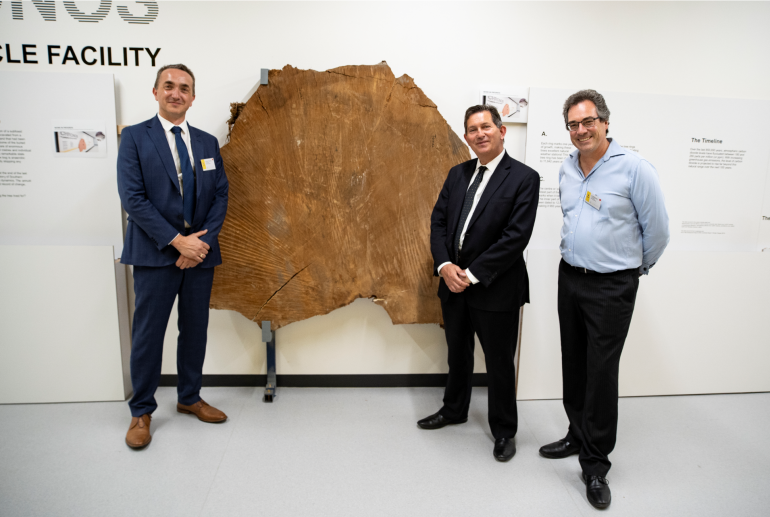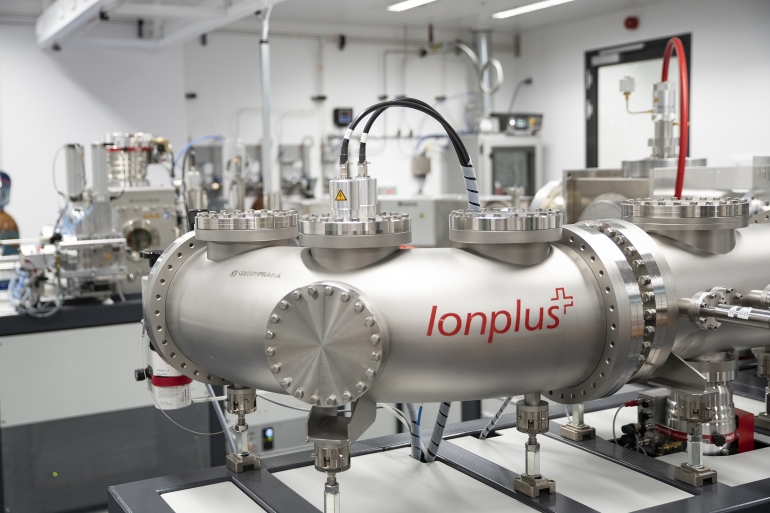The recently completed Science and Engineering Building now houses an $8m radiocarbon dating lab where researchers will be able to generate urgently needed data on climate change.
Researchers will have exclusive access to an archive of Antarctic ice, subfossil and living trees from remote New Zealand Subantarctic Islands and other ancient carbon resources to analyse in the new lab.
Data generated from the archive will allow researchers to fill a vast 50,000-year gap in the planet’s climate records, highlighting the impacts of abrupt and extreme climate change.
The data will complement existing detailed climate records which only date back some 150 years, allowing Australia to better understand its environmental history.
The new facility, located in the Mark Wainwright Analytical Centre, is one of the first in the world to take advantage of recent developments in carbon-14 dating that allow researchers to reconstruct Southern Hemisphere climate records with incredibly targeted accuracy.
ARC Laureate Fellow and Professor of Earth Science and Climate Change, Chris Turney said the new facility will facilitate carbon dating research at UNSW to help explain changes in our climate today.
“The insights afforded by this new facility will provide an improved understanding of the global drivers and impacts of future climate whilst also allowing us to investigate the adverse impact of past global events on life on earth, including major changes in the carbon cycle,” Professor Turney said.
“It will also increase our knowledge of prehistoric human populations across Australia and Asia,” he said.
UNSW President and Vice-Chancellor Prof Ian Jacobs said the facility is an exciting and important addition to UNSW and further enhances the University as a leader in climate sciences.
“This facility will be the source of profound new discoveries in the Earth, Environmental and Archaeological Sciences,” he said.
“If ever we needed this type of insight into our environment, it is now, as we face the existential threat of a climate emergency.”
The $8 million Chronos 14 Carbon-Cycle Facility was developed in partnership with Australian National University and the Australian Nuclear Science and Technology Organisation (ANSTO).
It features the Southern Hemisphere’s first Mini Carbon Dating System (MICADAS) Accelerator Mass Spectrometer (AMS).
The facility, designed to house this specific research, is temperature controlled and dust-free with dedicated space for each stage of the research process.
UNSW is partnering with ANSTO to train a new generation of interdisciplinary researchers who will be equipped to meet the environmental challenges of the future.
PhD students, postdoctoral research staff and academics from across UNSW, particularly in the School of Biological, Earth and Environmental Science in the Schools of Science, Civil Engineering and Engineering will be able to utilise this world-class facility.
The installation of this Chronos 14 Carbon-Cycle Facility highlights the University’s commitment to significantly invest in world-class research and teaching facilities to deliver on its Strategy 2025 to position itself as Australia’s global university.
The construction of the laboratory in the basement of the Science and Engineering Building was managed by Estate Management who collaborated with architects to deliver the brand new world-class dedicated space.
Executive Director (Acting) of Estate Management, Sancha Cromie, said: “Estate Management have delivered this dedicated world-class facility, enabling further research across seven Australian institutions in the area of chronology, climate and carbon; truly important research, to which we are humbled to have contributed.”

